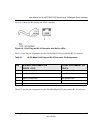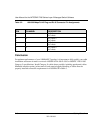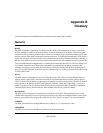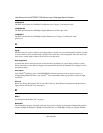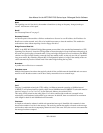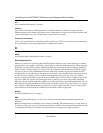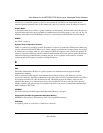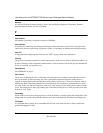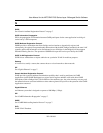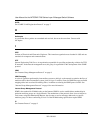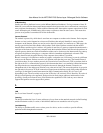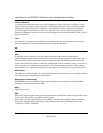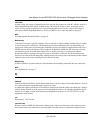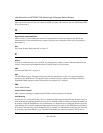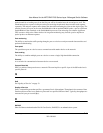
User Manual for the NETGEAR 7200 Series Layer 2 Managed Switch Software
B-6 Glossary
202-10010-01
Ethernet
A LAN specification developed jointly by Xerox, Intel and Digital Equipment Corporation. Ethernet
networks transmit packets at a rate of 10 Mbps.
F
Fast Ethernet
An Ethernet system that is designed to operate at 100 Mbps.
Fault isolation
A technique for identifying and alerting administrators about connections (such as those associated with
switch ports) that are experiencing congestion or failure, or exceeding an administrator-defined threshold.
Fast STP
A high-performance Spanning Tree Protocol. See “STP” on page 16 for more information.
Filtering
The process of screening a packet for certain characteristics, such as source address, destination address, or
protocol. Filtering is used to determine whether traffic is to be forwarded, and can also prevent unauthorized
access to a network or network devices.
Flash Memory
See “EEPROM” on page 5.
Flow Control
The process of adjusting the flow of data from one network device to another to ensure that the receiving
device can handle all of the incoming data. This is particularly important where the sending device is
capable of sending data much faster than the receiving device can receive it. There are many flow control
mechanisms. One of the most common flow control protocols for asynchronous communication is called
xon-xoff. In this case, the receiving device sends a an “xoff” message to the sending device when its buffer
is full. The sending device then stops sending data. When the receiving device is ready to receive more data,
it sends an “xon” signal.
Forwarding
When a frame is received on an input port on a switch, the address is checked against the lookup table. If the
lookup table has recorded the destination address, the frame is automatically forwarded on an output port.
Full-duplex
A system that allows packets to be transmitted and received at the same time and, in effect, doubles the
potential throughput of a link.




